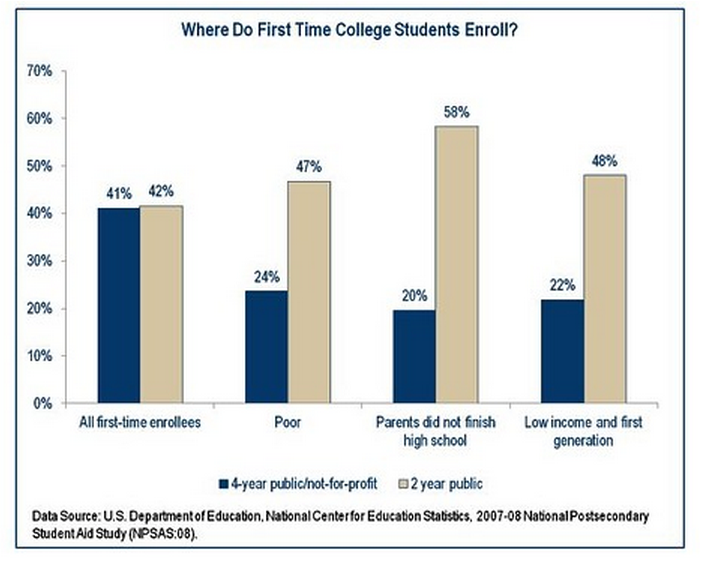The Obama proposal to expand community college eduction - America's College Promise - is based on one existing program in Tennessee - Tennessee Promise - and another that is to begin in the fall of 2015 in Chicago - Chicago Star Scholarship. A summary and cross reference of each program has been assembled by the Massachusetts Community College Executive Office and is reprinted below:
Tennessee Promise
|
Chicago Star Scholarship
|
America’s College Promise
|
|
Summary
|
· Tuition as
last-dollar scholarship, after all federal grants and aid (not including
loans or work study)
· Tennessee law,
first cohort of students now enrolled
· Students apply
through community organizations
|
·
Last-dollar scholarship, after all federal and state
aid applied
·
Starting Fall 2015
·
eligible students can pursue associate degree
at City Colleges of Chicago (CCC) at no cost - free tuition, fees, and books
|
·
Tuition for all costs up front
·
President will file legislation, discuss plan during
2015 State of the Union
|
Students
Eligible
|
· Only Entering HS
Students w/ 2.0 GPA
· Only US citizens
|
·
Current and future Chicago Public Schools graduates
(undocumented students eligible)
|
·
All Students
|
Required
by Student
|
· Maintain 2.0 GPA
while in college
· Full-time
enrollment (12-credit minimum/semester)
· Community
service – 8 hours per term, work with volunteer mentors from community organizations
· Ongoing program
meetings, advising
· Apply for FAFSA
first
· Maintain
Progress to completing program (same eligibility as federal aid)
|
·
Students must graduate from CPS in Spring 2015 or
after with a 3.0 GPA
·
must show that they test college-ready in math and
English via ACT COMPASS
·
Apply for FAFSA first
·
Must enroll in CCC Career Pathway
|
·
Maintain 2.5 GPA
·
Enrolled at least ½ time (6-credit minimum/semester)
·
Maintain Progress to completing program (same eligibility
as federal aid)
|
Institutional
Eligibility
|
· All institutions
that offer 2-year associate degree programs (public and private, and 4-years)
|
·
Only City Colleges of Chicago
·
Also encourage free dual enrollment opportunities to
students as a “head start” for program
|
·
Only two-year community colleges
·
Eligible academic programs need to be fully
transferable to public 4-years or in-demand training programs w/ high
graduation rates
·
Need to commit to some type of performance-based
reforms
|
Funding
|
· Dedicated
revenue source (lottery endowment)
|
·
CCC covers it through efficiencies and consolidation
(specifically with a nursing program)
|
·
Federal Gov’t pays 75% of costs through federal
budget, while participating states need to cover remaining 25% (as federal
matching grant)
|
Costs/
Numbers |
· Estimated cost
of $34M per year
· Provides five
consecutive semesters (fifth designed to make up for any dev. education
courses)
· Expects 25,000
students to apply each year
|
·
Estimated cost of $2 million in the first year
·
Provides up to three years of benefit (after federal
& state aid), or until completion of associate degree
·
Expects 1000 students to enroll
|
·
Estimated cost of $60 billion over 10 years
·
Estimated $8 billion to CC’s nationally per year ($6B
from feds, $2B from states)
·
Saves a community college student an average of
$3,800 in tuition per year (national average)
·
Could benefit roughly 9 million students
|



